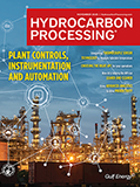July 2025
Catalysts
Drop-in solutions and digital catalyst insights to enhance the profitability and sustainability of syngas plants
This article details the advancements in the authors’ company’s plus catalyst series of syngas catalysts that improve efficiency, sustainability and profitability in ammonia, methanol and hydrogen production.
This is a preview of our premium content. Thank you for your interest—please log in or subscribe to read the full article.






Comments